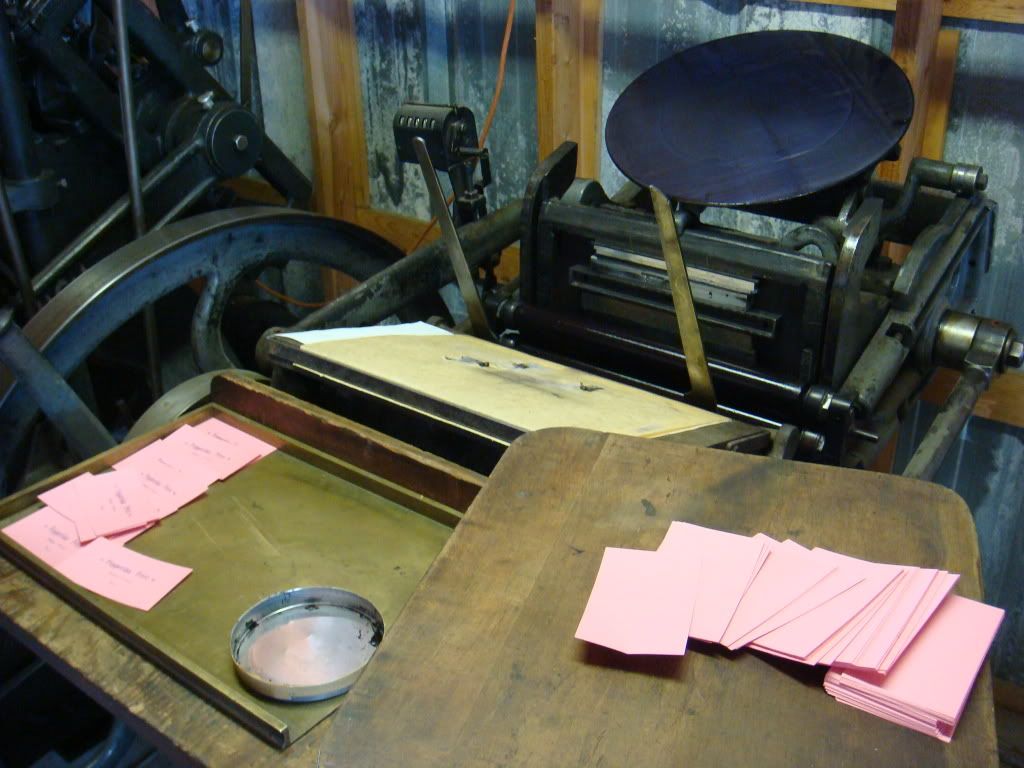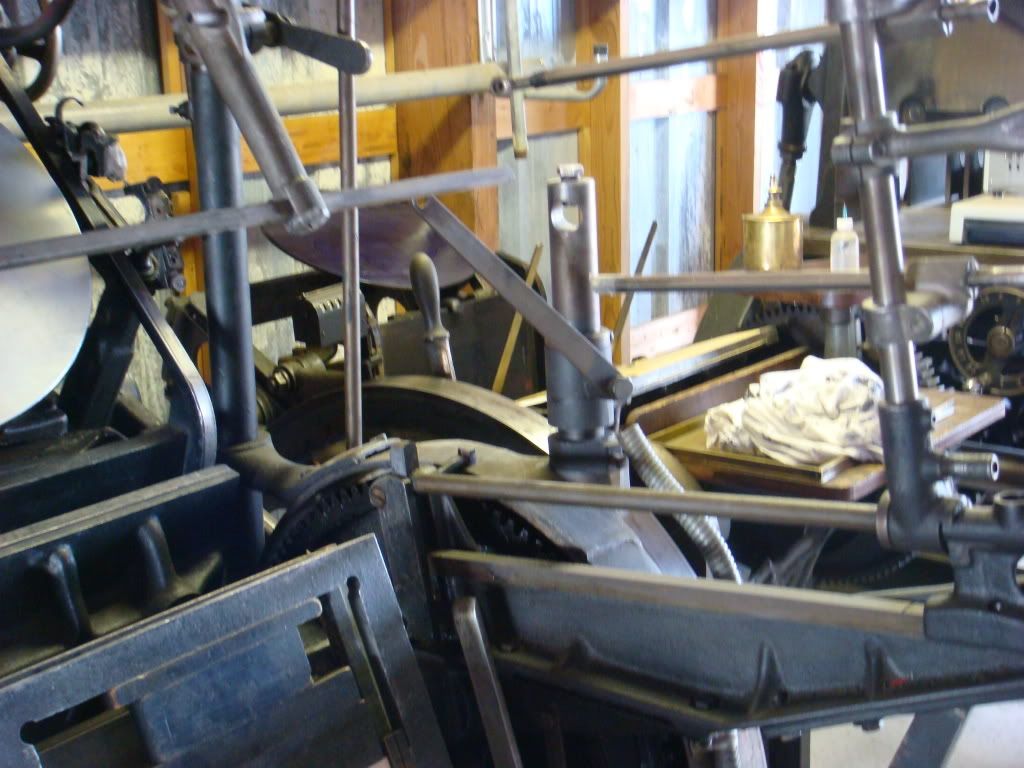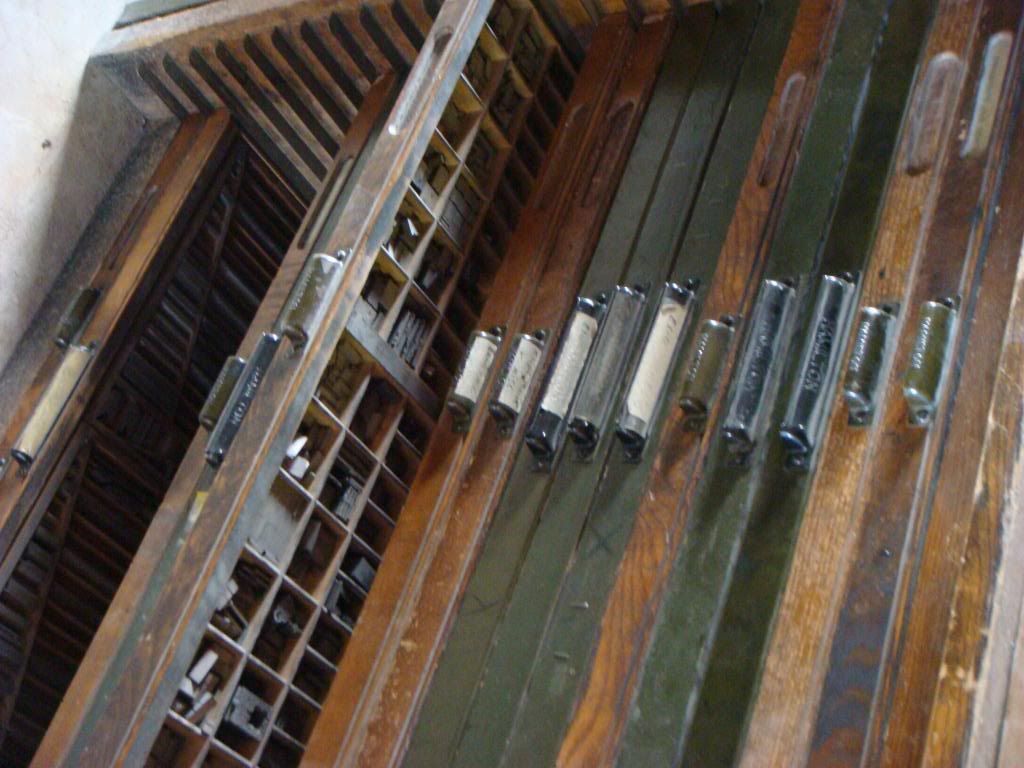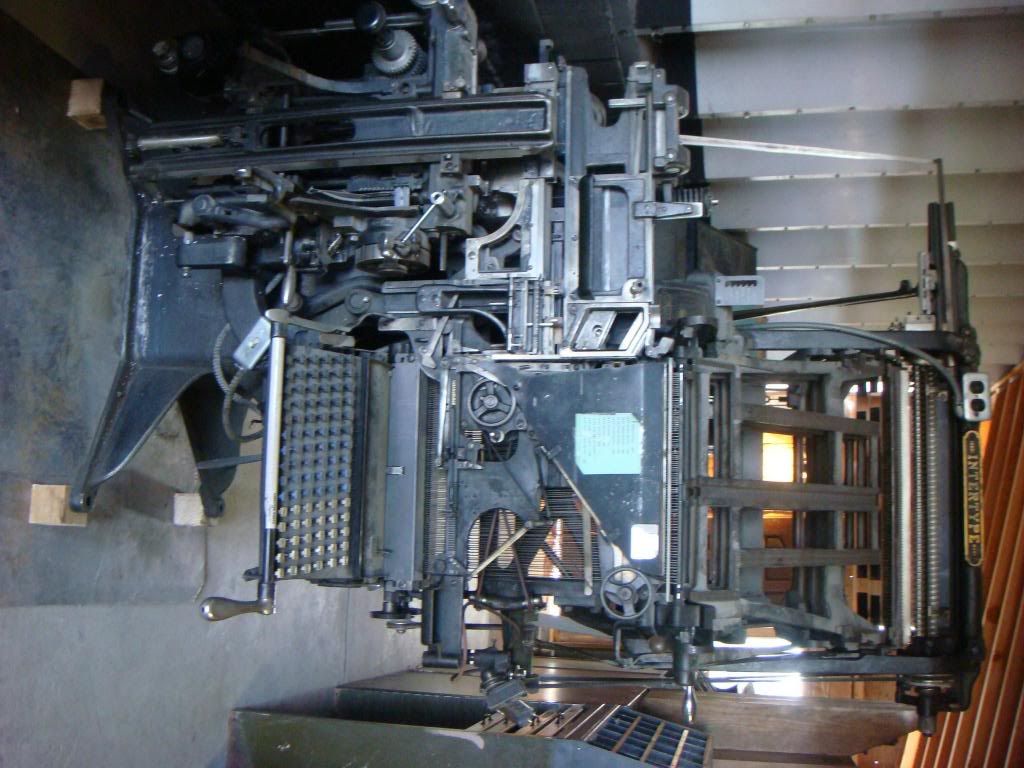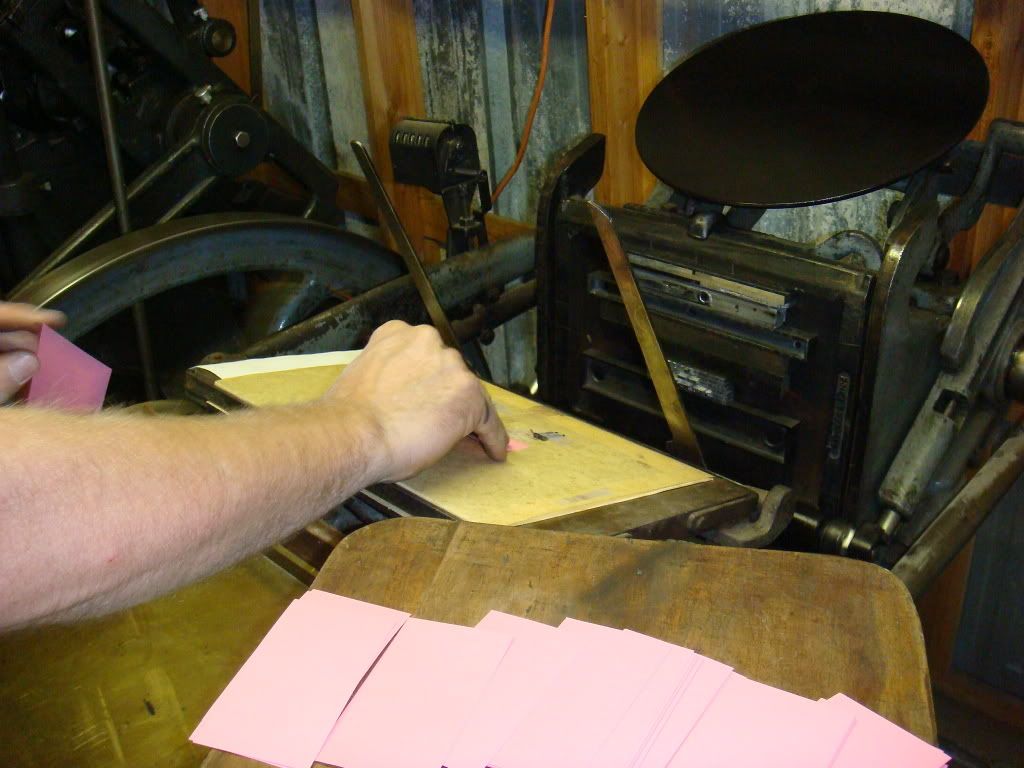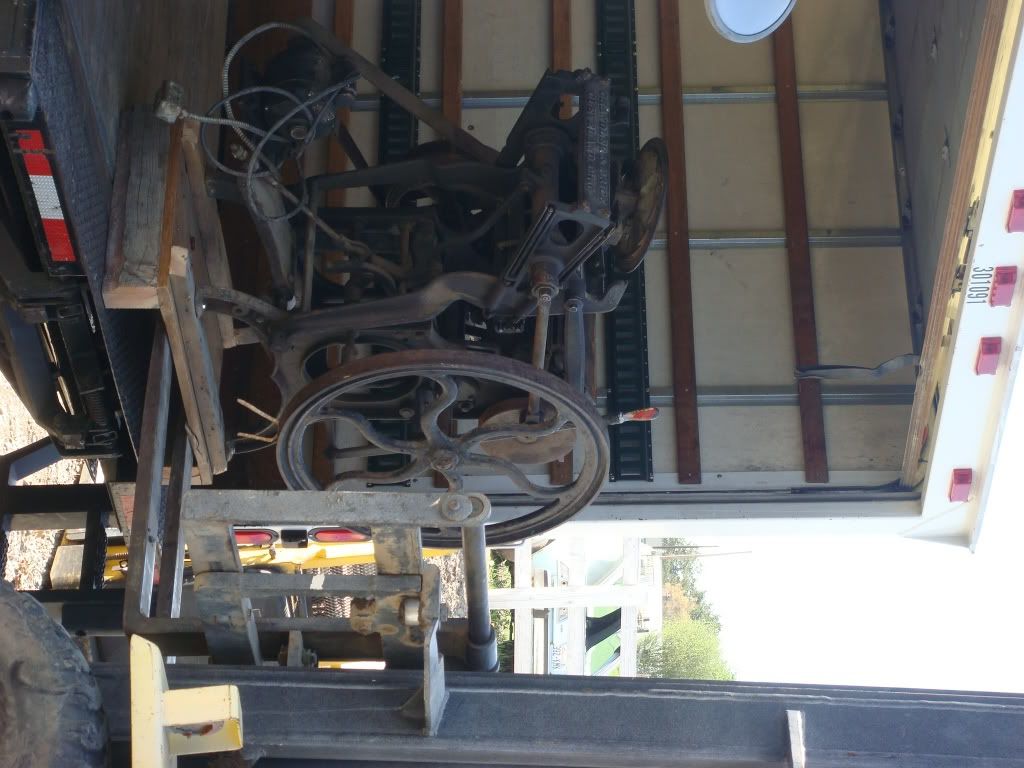
If you ask me, a forklift is the very best way to move a letterpress. We learned that the hard way.
Steve used one to move my new (oh-so-old) Chandler & Price platen from his letterpress wonderland into the back of the Penske for the big haul across the Cascades. It was beautifully simple; the easiest possible way to do it.

See? The easiest thing ever... assuming you can operate a forklift...

The trouble began when we finally got the truck home around 10.30 on Sunday night. We were worn out and looking forward to getting the letterpress move over with – long day, lots to get done, and soooo much driving. Instead, we spent the next four hours in a slow-motion nightmare that seemed destined to end with the complete destruction of my beautiful century-old letterpress.
(I told you there was drama.)
The Penske truck has a lift on the back, touted as a good thing for safely lowering a letterpress – no doubt by someone who's never laid eyes on a letterpress. But when we get the lift going, we discover it sits at an alarming downward angle. Maybe an angle of 5 degrees – maaaaaybe – but any angle
at all is alarming when you're moving a letterpress.
Our friend and neighbour Mike comes over to help us – a move he'll regret for years. But thank goodness for Mike. First of all, before becoming a doctor Mike was an Air Force engineer (and evidently a sucker for intellectual rigor) and an engineering consultation is definitely needed for this job! Second of all, we need
at least three people working against the letterpress, which for four long hours seems determined to hurl itself onto the concrete from a height.
Nathan and Mike spend the next four hours discussing, planning, strategising, inching the letterpress around on the pallet jack, testing the lift, and throwing around worrying phrases littered with "top-heavy" and "torque" and other words I don't want to hear. I look after Berry inside and tell myself
I can't look I can't look, and then I pray pray pray, and then I peek through the blinds obsessively at five-minute intervals, then I go outside to "help" (fret) as often as Berry will tolerate (thank goodness for
The Wiggles). Every attempt to get the pallet jack with the letterpress out onto the lift is disastrous. The letterpress is incredibly heavy, uneven, unstable, top heavy, and unstoppable once in motion – basically everything you
don't want in a fragile piece of equipment that you're trying to move. On the first attempt, the press actually teeters on the edge of toppling over the lift and on to the ground. I swear. I'm not a fainting girl but I could pass out. Like Steve says, one slip and it's scrap metal.
Eventually (because boy oh boy is this story long in real life) Mike decides it can't be done. Not really, not safely, not without the very distinct possibility of smashing 1000lbs of metal and 100 years of history on to the floor of our carport. I can't bear the thought. But Nathan, having come this far, isn't backing down. He and his pallet jack are getting this letterpress down, come hell or high water. I'm beside myself.
A lot more strategizing. Even more alarmingly, every single one of these strategies ends this way:
"And if it goes, it goes. Everyone duck." The common theme is the demise of my treasured press.
Marianne (who along with Mike must be sainted, pronto) gets out of bed at 1.30am to babysit Berry while the other three of us start putting our marginally-least-foolhardy plan into action. We lock the lift up, manouevre the letterpress on the pallet jack to the inside (truck) edge of the lift, attach ratchet straps from the top of each side of the flywheel back into the bars on each side of the inside of the truck (confused yet?) and then try to inch the pallet jack out on to the lift. Mike and I hold tension on the ratchet straps and Nathan moves the press forward, inch by eternal inch. We keep running into trouble. The press won't go over the lip between the truck and the lift – not without using rocking and momentum – and momentum is the enemy of the letterpress move.
We get it past the first lip (stuffed with cardboard) and then the second lip becomes a problem and
refuses to be stuffed. It's dark and cold and we can't see what we're doing, and the press is heavy against the ratchet straps. We stop constantly for Nathan to measure how much further we need to go, to get the pallet jack all the way out onto the narrow lift. It's crucial that we don't go any further out than we
have to, because the lift is terribly narrow and the downward angle becomes more alarming with every inch. The press wants, very much, to rock forward on the lift and slide over the edge.
Our plan is, when the pallet jack gets all the way out on to the lift, the lift will dip downwards and the press will start to pull forward toward the ground – hard. Mike and I will pull back on the ratchet straps, attached to the flywheel at the front end,
as hard as we can, while Nathan jumps down and lowers the lift. I keep asking, How will I know when to pull? and they say,
You'll know.
In the end, we're all pulling straps and switching places, and I'm not even sure who lowers the lift – only that there's a heart-stopping moment where the lift goes up instead of down, and that when the letterpress reaches the ground intact, we nearly collapse with relief.
Oh my, it's a letterpress miracle!
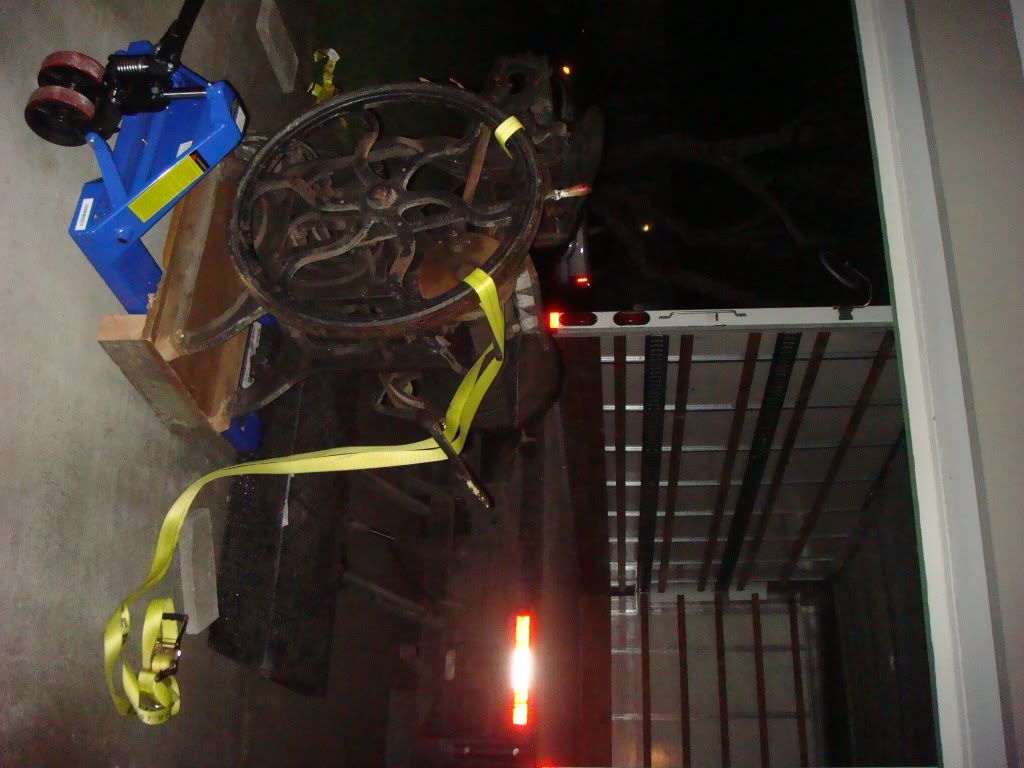 Things to come out of this experience:
Things to come out of this experience:
1) moving a letterpress is not for the faint-hearted, easily tired or weak-armed
2) trucks with automatic lifts are not as useful as they sound
3) our neighbours deserve champagne and medals
4) go get you a forklift
And of course, the biggest thing to come out of this experience... a whole new shiny- magical- new world of letterpress to explore. I can't believe my luck.
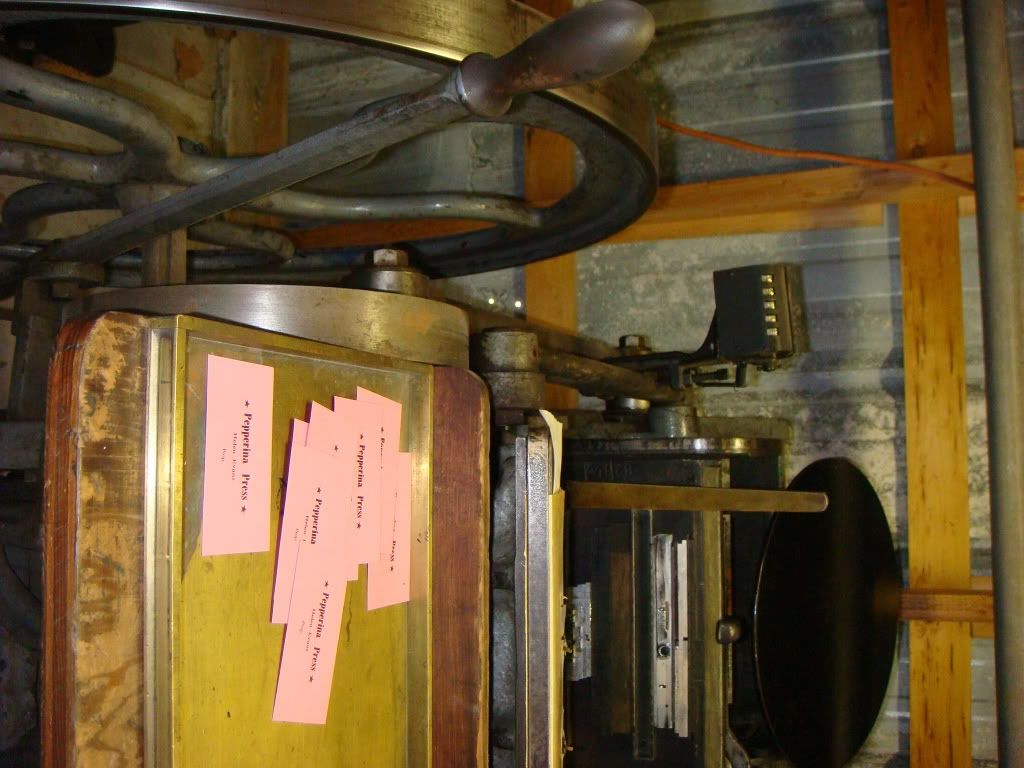 Oh yeah... we're moving again in four weeks. Anyone got a forklift?
Oh yeah... we're moving again in four weeks. Anyone got a forklift?
:(







